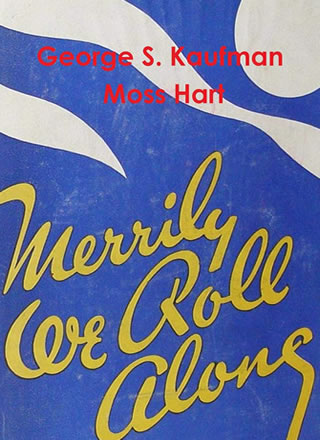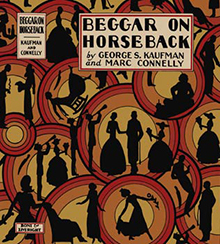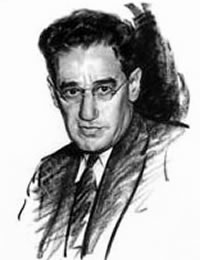Let’ Em Eat Cake
(1933)
Book by George S. Kaufman ad Morrie Ryskind
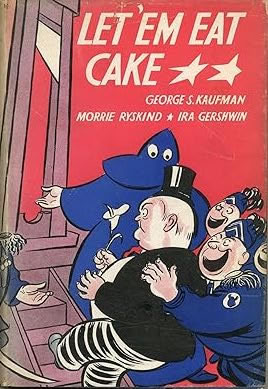
Music by George Gershwin
Lyrics by Ira Gershwin
Cast size: 13 men, 7 women, plus a large singing and dancing ensemble; many locations
Let’ Em Eat Cake opened on October 21, 1933 at the Imperial and ran 90 performances. It had not been revived until the Brooklyn Academy of Music presented a concert version in 1986, in conjunction with Of Thee I Sing.
For performance rights: Concord Theatricals

Table of Contents
The Plot
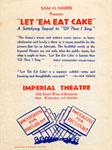
Wintergreen becomes a dictator and, worse, seems to like it enormously. However, complete control comes at a price and when the League of Nations descends on The Blue House (as it is now known), complications, as they say, ensue—and Wintergreen is rescued only in the nick of time from execution by a military tribunal.
About the play
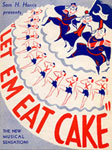
“a success that runs out of steam.”
Stage history
Let’ Em Eat Cake opened on October 21, 1933 at the Imperial and ran 90 performances.
It had not been revived until the Brooklyn Academy of Music presented a concert version in 1986, in conjunction with Of Thee I Sing. It has been presented in several concert version since then, but no major stage revival has yet been produced.
Other Plays in the Catalogue
The Channel Road (1929). Written by Alexander Woollcott and George S. Kaufman. Theatres: Plymouth Theatre (Oct 17, 1929 - Dec 1929).
Beggar on Horseback opened on February 24, 1924 at the Broadhurst Theatre and ran 224 performances. It was successfully produced in London the following season. A film version with Edward Everett Horton was released in 1925.
In a rare collaboration with his Algonquin Round Table comrade, Alexander Woollcott, Kaufman wrote his only murder mystery.
Table of Contents
Contact Us Today
Interested in bringing George S. Kaufman’s timeless plays to your stage?
Please refer to the contact information for each specific play on the various collection pages for direct amateur and professional licensing information.
Plays are represented by Concord Theatricals, Broadway Dramatic Licensing, and Music Theatre International respectively
If you are interested in first-class performance or film/television rights:
In the US, George S. Kaufman’s plays are represented by:
CPK Artists, LLC
In the UK, George S. Kaufman’s plays are represented by:
Alan Brodie Representation
For more information about George S. Kaufman or this website, contact:
Laurence Maslon
Literary Trustee, George S. Kaufman Estate


